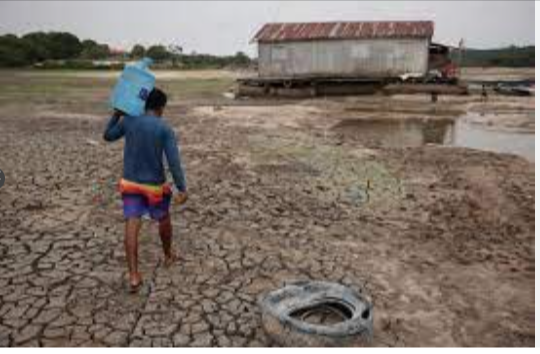Amazon Rivers Fall to Lowest Levels in 121 Years Amid Severe Drought”
River levels have dropped to their lowest points in almost a century as a result of a devastating drought that has left the Amazon Rainforest, often known as the “lungs of the Earth,” in critical condition. Millions of people in the region depend on these waterways for their livelihoods, so the environmental catastrophe is having an adverse effect on more than just the ecosystem and species. In this article, we’ll look at the causes of the catastrophic situation the Amazon rivers face in 2023 as well as some potential solutions.
Minimal Water Levels throughout History

In recent months, the Amazon basin has experienced an acute and unprecedented drought. Because of the drop in water levels, the Amazon River and many other significant rivers in the region are at their lowest points in 121 years. This situation is the result of numerous things, such as deforestation, climate change, and modifications to natural river flows.
⇒Join us on Telegram for more Sure and Accurate football-winning tips every day...click here
The Reasons for the Drought
Deforestation: One of the main causes of the current drought is deforestation. The Amazon rainforest has seen extensive logging and land removal for agriculture, which is necessary to generate rainfall. As a result, the water cycle in the region has been interrupted and less moisture has been discharged into the sky.
Climate Change: As a result of climate change, extreme weather events like droughts are occurring more frequently and with greater severity. The Amazon is becoming more and more dry due to altered rainfall patterns brought on by rising global temperatures.
River Alteration: Dam construction and water diversion for various purposes have disrupted the natural flow of the Amazon rivers. The cascading impacts of these changes have made the drought worse.
The Repercussions of the Drought
Both the local population and the ecology are greatly impacted by the severe drought in the Amazon basin:
Ecological impact: The Amazon rainforest is home to a diverse and expansive ecosystem. Due to habitat deterioration brought on by the drought, many plant and animal species are in danger. Fish populations are dropping, making it harder for communities that depend on fishing to exist.
Impact of Agriculture: For many communities in the Amazon basin, agriculture is a significant source of income. Drought-related crop failures have sparked worries about the food security of the area.
Low river levels are making clean drinking water increasingly difficult to come by. Many places struggle with a water shortage, which can be harmful to the general public’s health.
Economic Impact: The drought is having an effect on the mining, forestry, and transportation sectors. There are many natural resources in the Amazon region. Losses in money are rising.
Diminishment and Solutions
Addressing the complex problem of the severe drought and its repercussions in the Amazon basin would require a multipronged strategy.
Control of Deforestation: It’s critical to stop deforestation and provide assistance for replanting. Stricter enforcement of environmental rules and sustainable land-use practices can help restore the ecosystem’s natural equilibrium.
Climate Change Mitigation: Global action is required to reduce glasshouse gas emissions and slow down global warming. The fight against climate change is intertwined with the Amazon’s future.
Water Management: Regional governments and organizations need to implement effective policies for managing water resources. This entails responsibly designing and constructing water diversion schemes and dams.
Community Support: It’s imperative to give neighboring communities the tools they need to adapt to changing conditions. Communities that get resources for sustainable agriculture and alternate forms of livelihood will be better equipped to weather the consequences of the drought.
Global Cooperation: The Amazon is a global resource. Collaboration amongst nations is necessary to manage the problem effectively. This entails giving money to local programs aimed at conservation and sustainable development.
In summary
The Amazon basin dubbed the “lungs of the world,” is experiencing the worst drought in over a century, which has led to the lowest river levels ever. This environmental disaster affects the inhabitants, ecosystems, and economies of the region. To solve this issue, a concerted effort is required to decrease deforestation, slow down climate change, and improve water management strategies.
The Amazon rainforest has to be protected and rebuilt since it is an important resource for the entire planet. Sustainable development initiatives, responsible land use, and international collaboration are all necessary to preserve the Amazon for the coming generations. The current drought serves as a stark reminder of the urgent need to take action to protect one of the most significant and biodiverse places on Earth.
Links for Further Reading:




